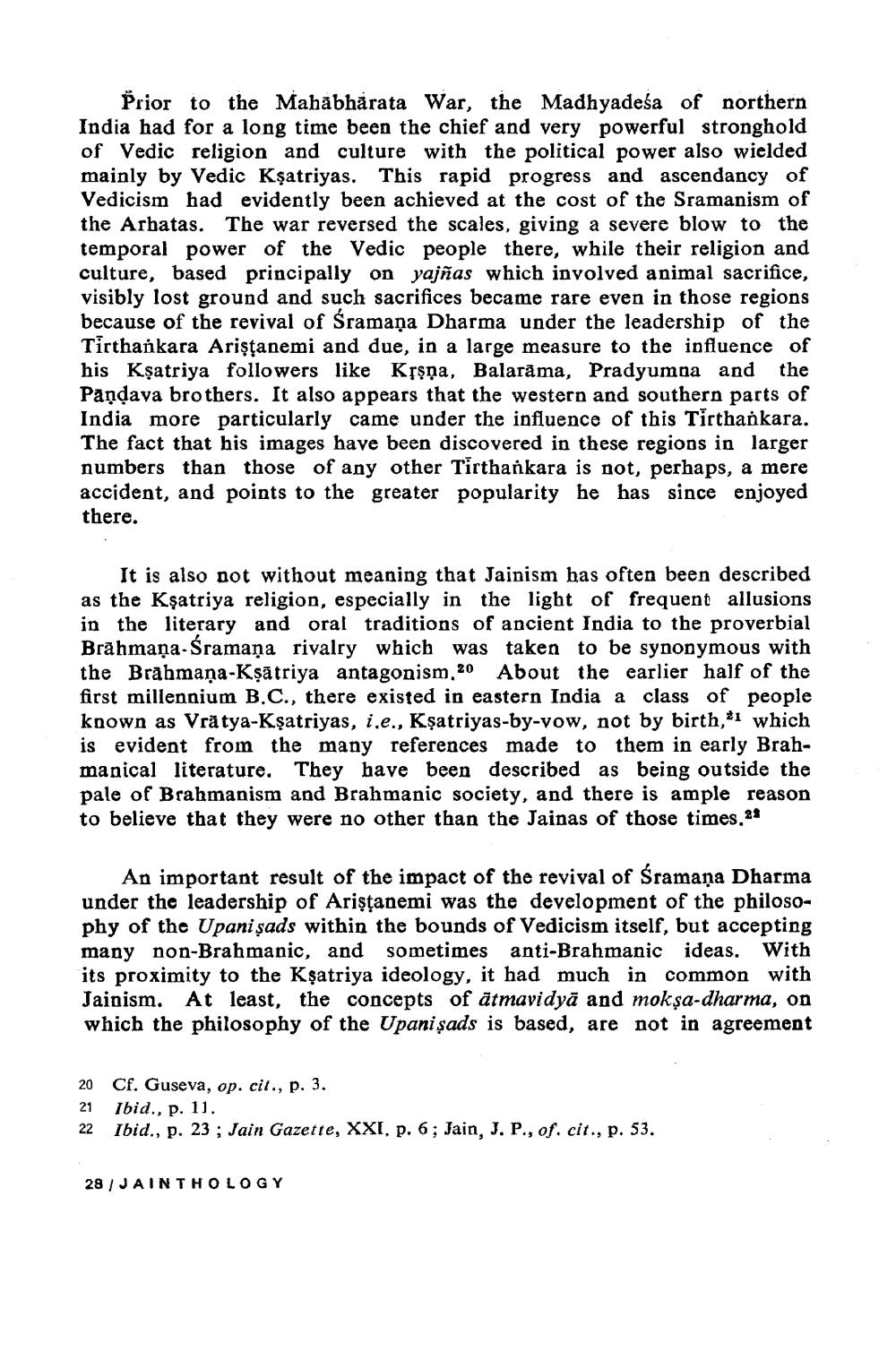________________
Prior to the Mahabharata War, the Madhyadeśa of northern India had for a long time been the chief and very powerful stronghold of Vedic religion and culture with the political power also wielded mainly by Vedic Ksatriyas. This rapid progress and ascendancy of Vedicism had evidently been achieved at the cost of the Sramanism of the Arbatas. The war reversed the scales, giving a severe blow to the temporal power of the Vedic people there, while their religion and culture, based principally on yajñas which involved animal sacrifice, visibly lost ground and such sacrifices became rare even in those regions because of the revival of Sramaņa Dharma under the leadership of the Tirthankara Ariştanemi and due, in a large measure to the influence of his Kşatriya followers like Krsna, Balarama, Pradyumna and the Pandava brothers. It also appears that the western and southern parts of India more particularly came under the influence of this Tirthankara. The fact that his images have been discovered in these regions in larger numbers than those of any other Tirthankara is not, perhaps, a mere accident, and points to the greater popularity he has since enjoyed there.
It is also not without meaning that Jainism has often been described as the Kşatriya religion, especially in the light of frequent allusions in the literary and oral traditions of ancient India to the proverbial Brāhmaṇa-Śramana rivalry which was taken to be synonymous with the Brahmana-Kşātriya antagonism,20 About the earlier half of the first millennium B.C., there existed in eastern India a class of people known as Vrătya-Kşatriyas, i.e., Ksatriyas-by-vow, not by birth,21 which is evident from the many references made to them in early Brahmanical literature. They have been described as being outside the pale of Brahmanism and Brahmanic society, and there is ample reason to believe that they were no other than the Jainas of those times.23
An important result of the impact of the revival of Sramaņa Dharma under the leadership of Aristanemi was the development of the philosophy of the Upani şads within the bounds of Vedicism itself, but accepting many non-Brahmanic, and sometimes anti-Brahmanic ideas. With its proximity to the Ksatriya ideology, it had much in common with Jainism. At least, the concepts of ātmavidyā and mokşa-dharma, on which the philosophy of the Upani şads is based, are not in agreement
20 Cf. Guseva, op. cit., p. 3. 21 Ibid., p. 11. 22 Ibid., p. 23 ; Jain Gazette, XXI, p. 6; Jain, J. P., of. cit., p. 53.
28/JAINTHOLOGY




